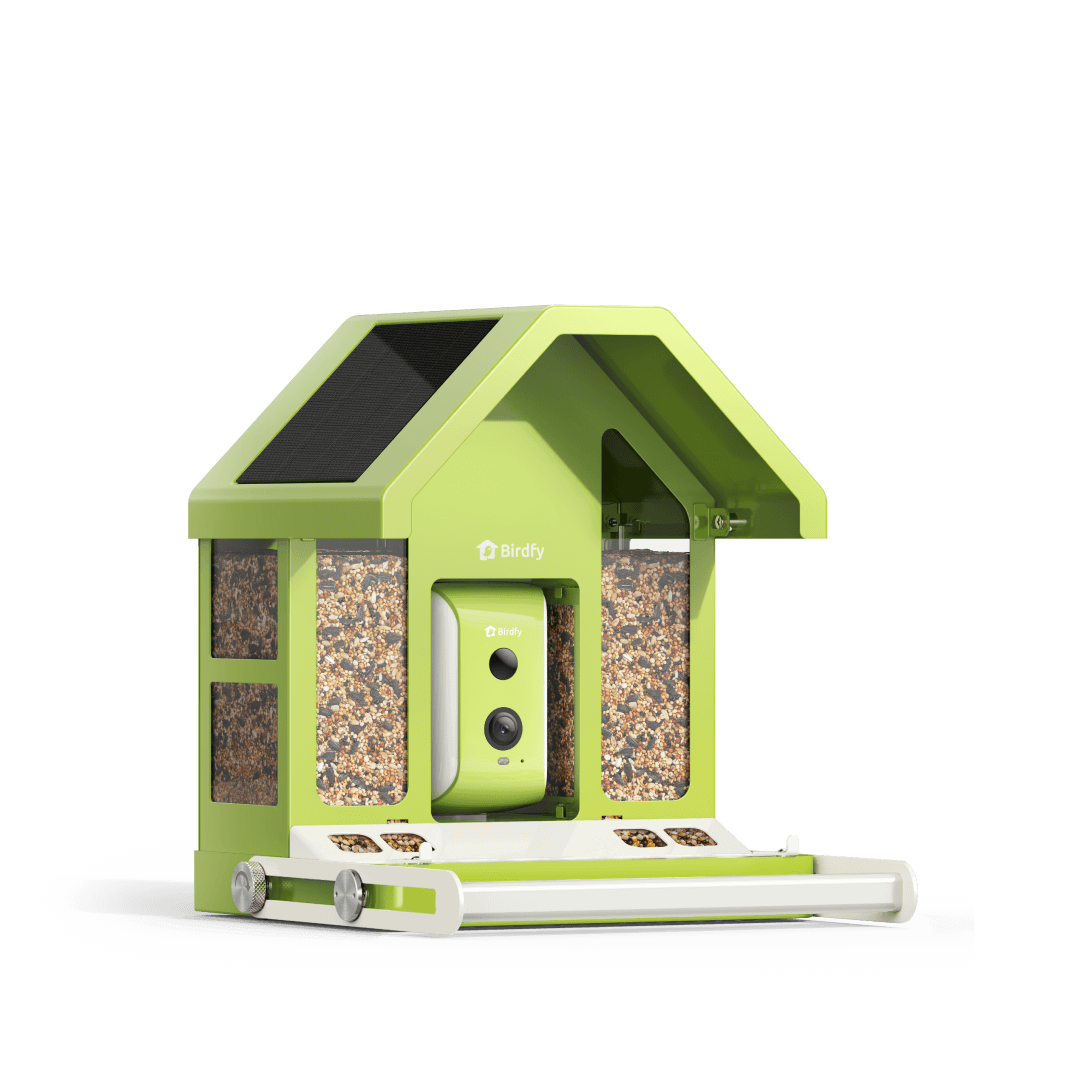Eastern VS Western Meadowlark
The Eastern Meadowlark (Sturnella magna) and the Western Meadowlark (Sturnella neglecta) are two closely related species of birds belonging to the Icteridae family. Both birds are known for their striking yellow and black plumage and melodious songs, making them popular among birdwatchers and nature enthusiasts. Despite their similarities, these two species exhibit distinct characteristics in terms of their physical appearance, vocalizations, habitats, and behaviors. This essay aims to provide a comprehensive overview of the Eastern and Western Meadowlarks, highlighting their differences and ecological significance.
Physical Characteristics
The Eastern Meadowlark is characterized by its bright yellow underparts, with a distinctive black "V" shaped mark on its chest. The back of the bird is mottled brown and black, providing excellent camouflage in its grassy habitat. Adult Eastern Meadowlarks measure approximately 7.5 to 9.1 inches in length, with a wingspan of about 15 to 19 inches. Their beaks are long and pointed, adapted for foraging for insects and seeds.

The Western Meadowlark shares a similar overall appearance with its Eastern counterpart but can be distinguished by a few key features. The Western Meadowlark also has bright yellow underparts and a black "V" mark on its chest, but its overall coloration tends to be slightly more subdued, with more extensive brown streaking on the back. Adult Western Meadowlarks are similar in size to Eastern Meadowlarks, averaging around 7.9 to 9.1 inches in length, with a wingspan of 15 to 17 inches.

Vocalizations
One of the most notable differences between the Eastern and Western Meadowlarks lies in their songs. Both species are known for their beautiful and complex vocalizations, which serve various purposes, including attracting mates and defending territories.
The song of the Eastern Meadowlark is often described as a melodious, flute-like whistle that can be heard from a distance. It consists of a series of clear, sweet notes that create a musical quality. The Eastern Meadowlark's call is often considered one of the most beautiful songs of North American birds, evoking a sense of the open fields and meadows it inhabits.
In contrast, the Western Meadowlark's song is more varied and less melodious. It often includes a series of rapid, mechanical notes, with a distinct, sharp quality. The Western Meadowlark's vocalizations can sometimes sound more like a series of whistles and clicks, lacking the fluidity of the Eastern Meadowlark's song. However, both species are capable of mimicking other birds and environmental sounds, adding to their vocal repertoire.
Habitat Preferences
The Eastern Meadowlark primarily inhabits open grasslands, pastures, and fields in the eastern United States and parts of Canada and Mexico. They prefer areas with tall grasses and scattered shrubs, which provide cover and nesting sites. These birds are often found in agricultural fields, where they forage for insects and seeds. Eastern Meadowlarks are also known to inhabit wetlands and marshes, especially during migration.
The Western Meadowlark, on the other hand, is found in the western regions of North America, including the Great Plains, the Rocky Mountains, and the Pacific Coast. They prefer similar habitats to their Eastern counterparts, often residing in open grasslands, prairies, and fields. However, Western Meadowlarks are more tolerant of drier conditions and can be found in areas with sparse vegetation, such as sagebrush steppe and arid grasslands.
Breeding and Nesting Behavior
Both Eastern and Western Meadowlarks exhibit similar breeding and nesting behaviors, but there are some differences in their reproductive habits.
The Eastern Meadowlark typically breeds from late March to August. The female builds a cup-shaped nest on the ground, often hidden within dense grass or vegetation. The nest is constructed using grasses, weeds, and other plant materials. After laying a clutch of 3 to 7 eggs, the female incubates them for about 12 to 13 days. Once hatched, both parents participate in feeding the chicks, which fledge approximately 10 to 12 days after hatching.
The Western Meadowlark also nests on the ground, with the female building a similar cup-shaped nest. However, they may occupy slightly different nesting sites, often choosing locations that offer more cover from predators. The breeding season for Western Meadowlarks is also similar, typically occurring from April to July. They lay a similar number of eggs, and both parents are involved in raising the young.
Migration Patterns
The Eastern Meadowlark is considered a partial migrant. Northern populations tend to migratesouthward during winter months, while southern populations may remain resident year-round. Migration typically occurs in flocks, and these birds often utilize open fields and agricultural areas during their journey. Eastern Meadowlarks migrate primarily from the northern U.S. and southern Canada to warmer regions in the southeastern U.S. and parts of Mexico, where food sources are more abundant.
In contrast, the Western Meadowlark displays a more varied migratory behavior. Some populations are resident throughout the year, particularly in milder regions, while others migrate further south during the colder months. Western Meadowlarks primarily move from the northern Rockies and the Great Plains to areas in California, Arizona, and Mexico. Their migration patterns are influenced by available food resources and environmental conditions, such as snow cover and temperature.
Behavior and Social Structure
Eastern Meadowlark Behavior

Eastern Meadowlarks are generally more social than their Western counterparts, often found in small groups or flocks, especially during migration and winter. They exhibit a variety of behaviors, such as foraging in open fields, singing from elevated perches, and engaging in territorial displays. During the breeding season, males establish and defend territories through song and visual displays, showcasing their vibrant plumage to attract females.
Western Meadowlark Behavior

Western Meadowlarks tend to be more solitary or found in smaller groups outside the breeding season. They are equally vocal and will sing from prominent perches, but their territorial behavior is less conspicuous compared to Eastern Meadowlarks. Western Meadowlarks are known for their ground-foraging behavior, often searching for insects and seeds among the grasses and shrubs. They adapt well to their environment, utilizing a variety of foraging strategies to find food.
Conservation Status and Threats
Both Eastern and Western Meadowlarks face various threats due to habitat loss, agricultural practices, and climate change.
The Eastern Meadowlark has experienced population declines in recent decades, primarily due to the conversion of grasslands to agricultural land and urban development. Pesticide use and habitat fragmentation have also contributed to their decline. Conservation efforts for Eastern Meadowlarks focus on preserving and restoring grassland habitats, promoting sustainable agricultural practices, and raising public awareness about the importance of these habitats for bird species.
Similarly, Western Meadowlarks have faced challenges due to habitat loss, particularly in the Great Plains where grasslands have been converted for agriculture. Overgrazing, invasive species, and climate change also pose threats to their populations. Conservation initiatives for Western Meadowlarks include habitat protection and restoration, as well as efforts to mitigate the impacts of climate change.
Ecological Importance
Both Eastern and Western Meadowlarks play crucial roles in their ecosystems. As insectivores, they help control insect populations, contributing to the overall health of grassland ecosystems. Their foraging activities also aid in seed dispersal, promoting plant diversity. Additionally, their presence is an indicator of the health of grassland habitats; declines in meadowlark populations can signal broader ecological issues that may affect other species as well.
Conclusion
In summary, the Eastern and Western Meadowlarks are two closely related but distinct species that exemplify the diversity of avian life in North America. While they share similar physical traits and ecological roles, their differences in vocalizations, habitats, and behaviors highlight the adaptability of these birds to their respective environments. Understanding these differences is essential for effective conservation strategies aimed at protecting their populations and the grassland ecosystems they inhabit. As human activities continue to impact their habitats, efforts to preserve and restore these environments are crucial for ensuring the survival of both the Eastern and Western Meadowlarks. By fostering a deeper appreciation for these birds and their habitats, we can work towards a more sustainable future for all wildlife.


































